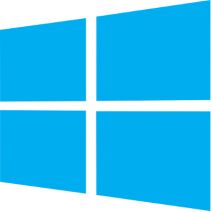 Who’s excited about the release of Windows 10 on July 29th? We sure are! After all, Microsoft’s new OS provides features and improvements that have many users planning on upgrading as soon as possible. However, as cool as Windows 10 looks to be, we don’t recommend that businesses blindly upgrade.
Who’s excited about the release of Windows 10 on July 29th? We sure are! After all, Microsoft’s new OS provides features and improvements that have many users planning on upgrading as soon as possible. However, as cool as Windows 10 looks to be, we don’t recommend that businesses blindly upgrade.
Given the nature of software, it’s typically a good idea to upgrade as soon as you can in order to take advantage of the latest security measures. Although, when it comes to upgrading to a completely new operating system, the rules are different and you need to take a more cautious approach.
Microsoft has made this cautious-to-upgrade approach difficult to abide by, due in part to its marketing strategy of sending Windows 7 and 8.1 users a notification that Windows 10 is now available for pre-order, and that the upgrade is free to licensed users. Check your System Tray if you’ve not yet seen this notification. ![]()
Microsoft even goes so far as to give users the option to upgrade with one click of “Yes” or “Go!” This is a far cry from the days of waiting in line for the midnight release of Windows 95.
If a Windows user hasn’t done their homework about the new OS, they may be shooting themselves in the foot by blindly upgrading. Worst-case scenario: You’ve got a mission-critical app that isn’t compatible with Windows 10, and you don’t find this out until after you’ve installed the new OS. While Microsoft makes upgrading to a new OS easy, downgrading to an older OS is a very difficult and time-consuming task that you don’t want to experience.
Additionally, the new features of Windows 10 can potentially displace existing workflows if one isn’t prepared. Here are four more reasons why you may want to hold off on upgrading until the dust settles on Windows 10.
- Internet Explorer has been replaced with a new web browser, Microsoft Edge. While this new browser likely has advantages over IE, it’s important to keep in mind that its new interface may befuddle longtime IE users. Plus, it’s rare for a 1.0 product to be error free upon its release.
- While consumers will often jump on a new OS download as soon as it's released, it's a safe move for enterprises to wait until the first service pack comes out. A conservative move like this will prevent your business from being a beta tester for Microsoft.
- In addition to having compatibility issues with older software, you might see issues with the compatibility of older peripherals, like scanners, printers, optical drives, etc. If Microsoft has deemed these devices obsolete, then your previously-functioning equipment will now be a paperweight.
- Then there’s the potential to lose data and settings. Shield Watch explains, “Just like the browser upgrade, an entire OS upgrade comes with the potential for data loss. If you’re one of the brave to venture early we suggest you have a complete backup of your computer including system state, files and settings since there may be no going back!”
In conclusion, we think that Windows 10 has a lot going for it, but like any major business decision, it’s not a new venture that you want to blindly take on. Voyage Technology is here to help. We can assess your IT infrastructure so that you’ll know for sure if everything is compatible with Microsoft’s latest OS. We can even do the upgrading work for you so that you’ll know that it’s done right. Call us at 800.618.9844 to make the smoothest transition possible to Windows 10.


